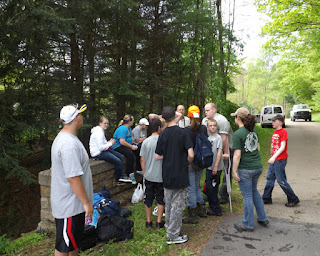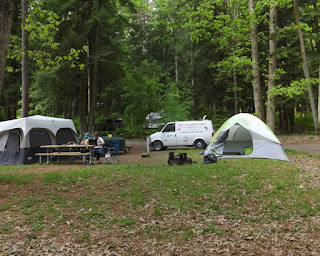Here in Eastern PA we are about to witness an event that happens as regular as clockwork every 17 years. This is my 4th experience with "brood 2" of the 17 year variety (maybe my last).
There are several types of cicada in North America and several broods or regional groups of each type.
There are more than 10 broods of the 17 year variety. Brood 2 is one of the largest stretching from Massachusetts to North Carolina. They last appeared in 1996 and this years new born larva will not emerge until 2030.
Here are some pics of an brood we witnessed several years ago in KY.
 |
| small holes in the ground from which the grubs emerge |
 |
| empty exoskeleton of grub with newly emerged adult |
 |
adult cicada after "drying"
note the red eyes unique to the 17 year cicada |
 |
the adults do not eat - they exist on the energy they stored
up while "sucking" on tree roots during the 17 years underground |
 |
minor tree damage is a result of the female
laying here eggs in the twigs of trees - these dead branches fall to the ground
and as the eggs hatch the grubs tunnel under the soil to begin there 5 stage 17 year larva stage |
Our display at the nature center this month is about the 17 year cicada. We are having fun with specimens from our collection and thanks to a good friend some live grubs. In another week or two we will have live adults there too.













